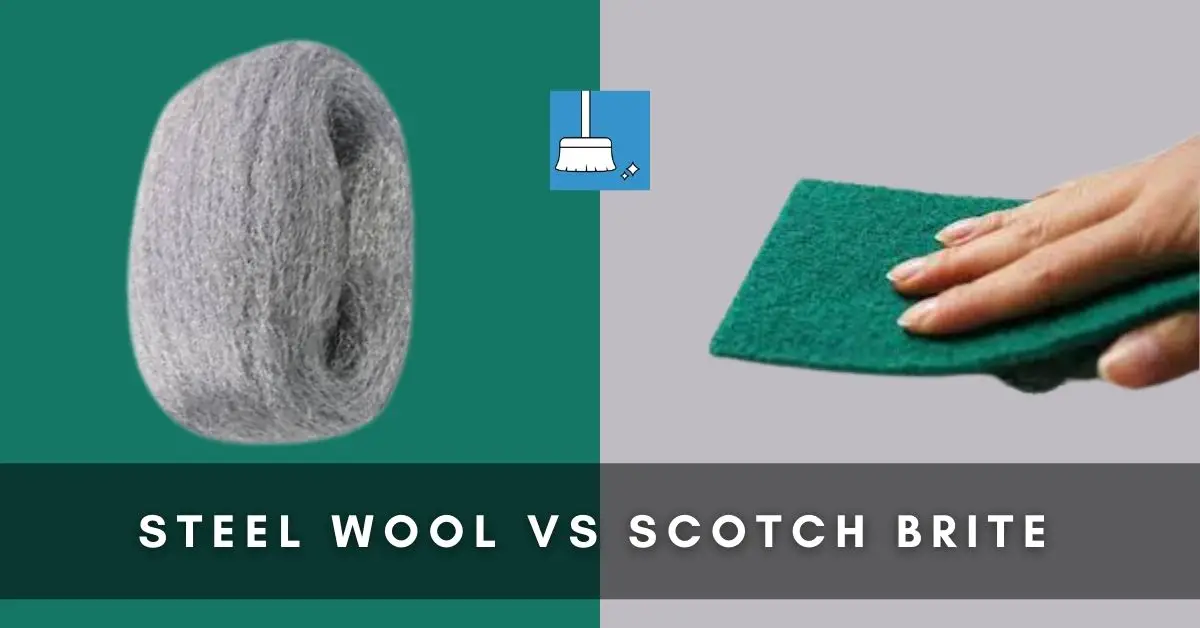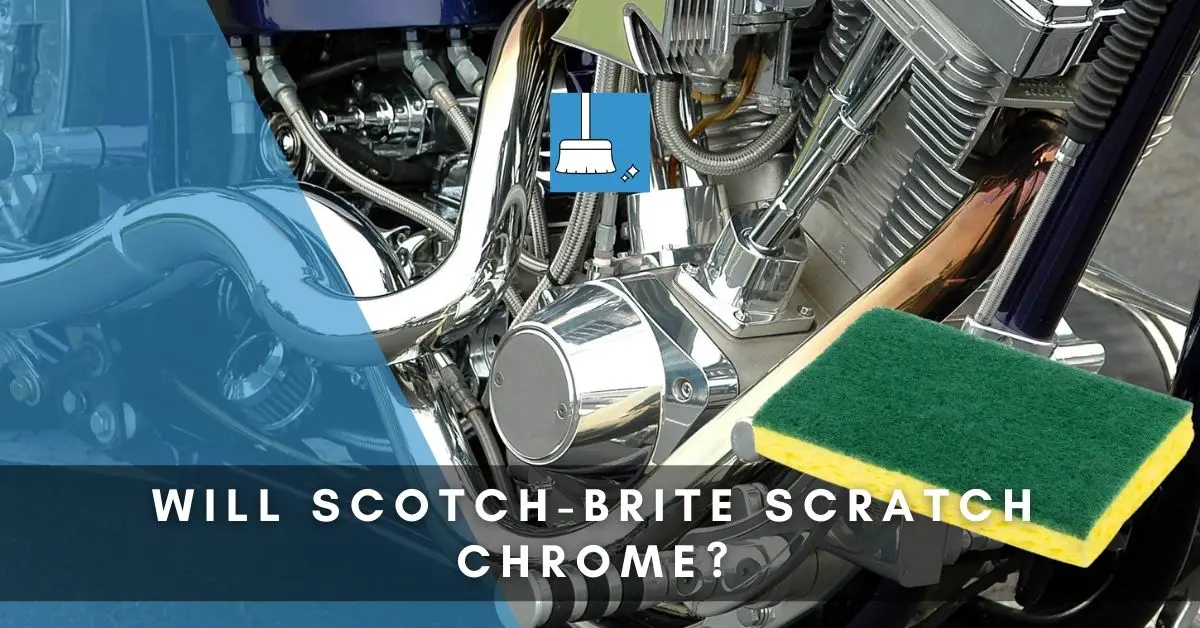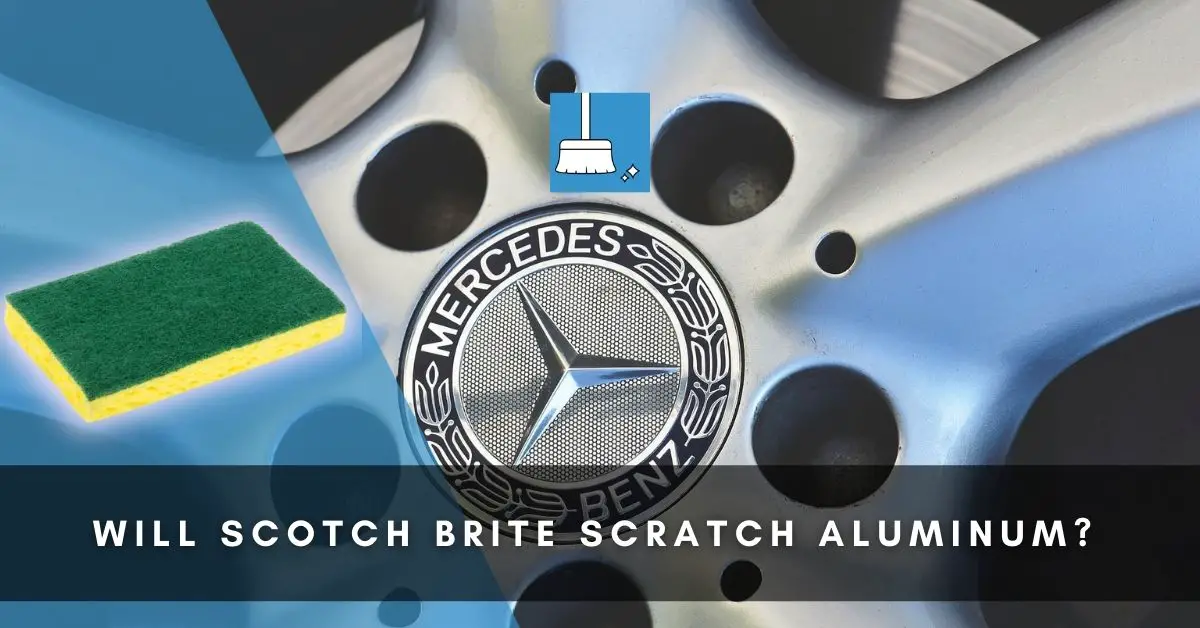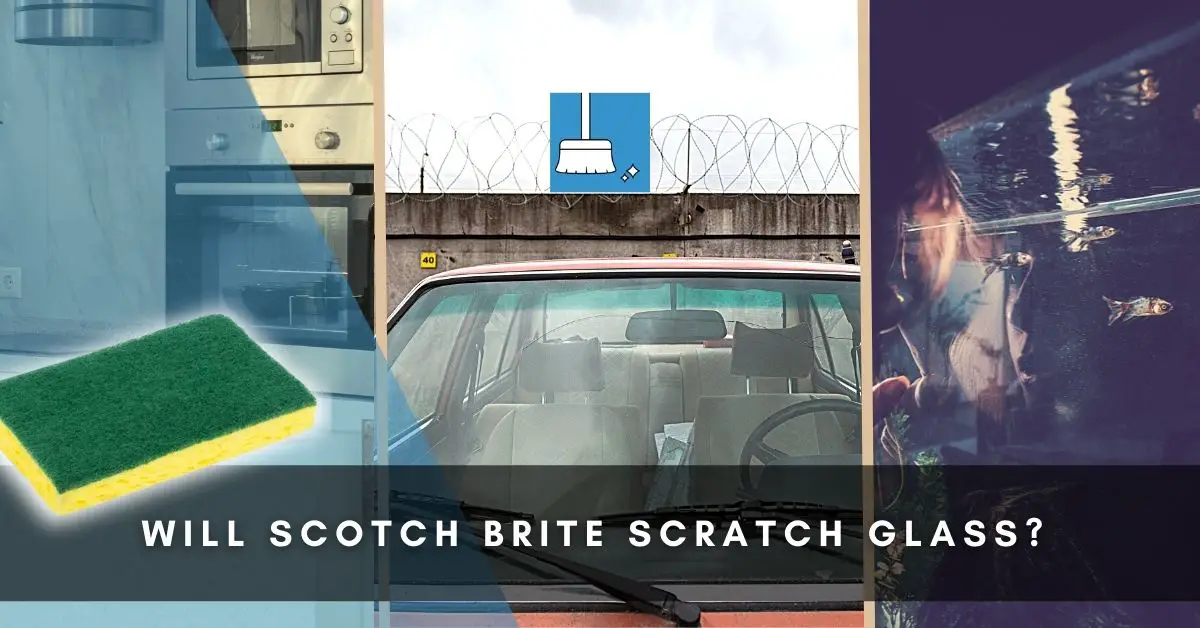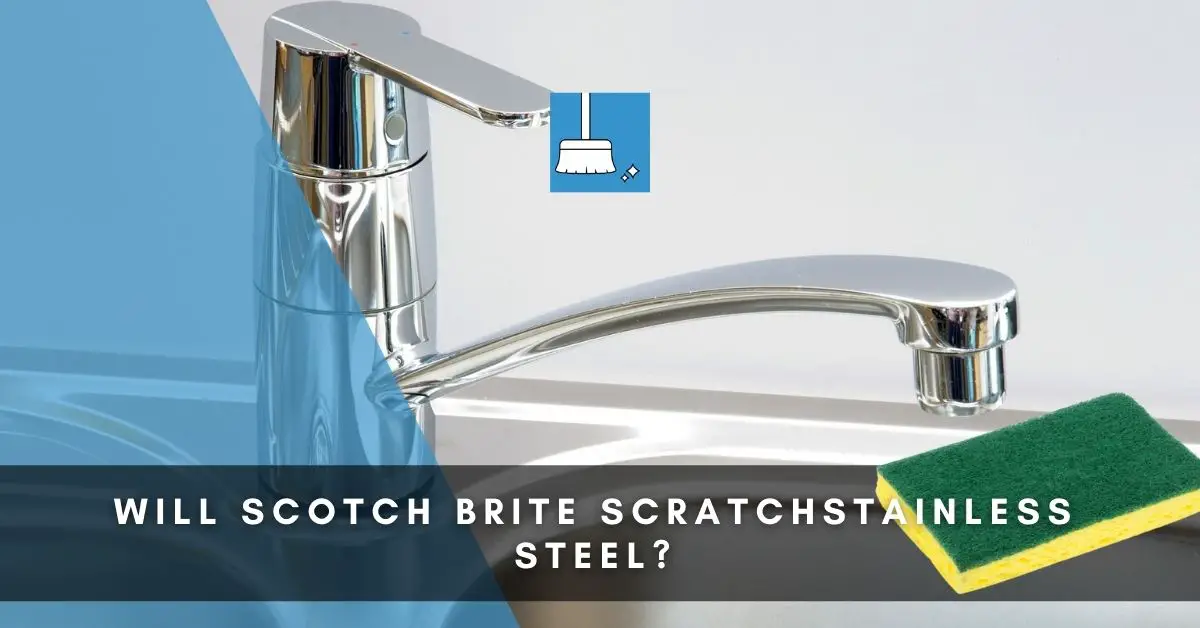When it comes down to giving wooden, metal, and certain hard surfaces a well-polished, sparkling, and clean appearance, steel wool or Scotch Brite are always the go-to by artisans and cleaning experts.
If you have to use any of these cleaning tools mentioned earlier, you might have heard colleagues or friends complain or recommend one as better than the other. Is Scotch Brite more effective than steel wool or the other way around? Or can they be used alternatively?
This article will compare steel wool and Scotch Brite, and delve deep into the most common hard surfaces they can and cannot effectively clean/polish.
Steel Wool vs Scotch Brite
Steel wool and Scotch Brite are not the same. They are of different materials, and although their functionalities are akin (they are both cleaning, scrubbing, and polishing tools), there are certain distinct qualities in one that the other lacks.
In essence, there are certain things a ball of steel wool can effectively do as regards cleaning that a Scotch Brite would mess up entirely and vice-versa.
#1- Steel Wool vs Scotch Brite (The Anatomy)
What Is A Steel Wool Made Of?
A ball of steel wool is a product of a low-carbon metal that has been finely shaved into thin, thread-like strands produced by a process that involves the slicing of metal through a toothed die.
The light, metal slices become wool-like or spongy in appearance and touch when bundled together.
What Is A Scotch Brite Made Of?
Scotch Brite is actually a brand name for several disinfecting, scouring, and polishing products. Please do not confuse it with a raw, abrasive product like steel wool.
In this context, the spotlight is on the Scotch Brite scouring pad, compared with steel wool.
The Scotch Brite Heavy Duty Pad comprises varying abrasive materials; however, its primary active ingredients include Aluminum Oxide Mineral (non-fibrous), Titanium Dioxide, Cured Resin Mixture, and Nylon Fiber. The pad comes wet when bought.
Because steel wool is metal based, it will rust over time. You will need to keep the steel wool pad from rusting by storing it in specific ways. But with a scotch brite pad, you don’t have the hassle of storing it in the perfect way.
#2- Steel Wool vs Scotch Brite (Most Ideal Uses)
Steel Wool
Steel wool is often used as a scouring and polishing tool in industrial and household cleaning. Discover all that a ball of steel wool can do below:
1- Sharpening Tools: Need to get that blunt cutting tool to become acuminated in a minute? It’s easy.
Use the tool to cut through a bundle of steel wool. In no time, your cutting tool will become sharp again.
2- Cleaning of Cookware: Steel wool is used to rid pots, ovens, and pans of hard stains ranging from a charcoal mess, burnt meal leftovers, and dried grease splatters.
It is that constantly summoned kitchen staple required to do the most strenuous work.
3- Scrubbing Rust off Metals: This invaluable piece is excellent for getting rust off metallic surfaces and materials completely, setting the tool for a repaint or not.
You can revive a rusty tool with several chemicals coupled with steel wool.
4- Removing Paint: It peels paint from wood, wallpapers, metal, and tiles.
When nail polish bottles crash on your flooring or the kids get creative and decide to color the wallpaper with their crayons, you can readily get the paint off with the aid of steel wool.
5- Exquisite Photography: You would be amazed at the photography masterpiece created by the creative combination of steel wool, fire, good lighting, and a perfect shot angle.
6- Staining Wood: This is one woodwork DIY hack to give a woodblock that beautiful, vintage appearance.
If retro furniture is your thing, dissolve steel wool in a jar of vinegar and pour the solution on the wood surface or use a brush to wipe the content through and you would get your results immediately.
Scotch Brite
A Scotch Brite Hand Pad does more than dishwashing; it performs more functions than many are aware of.
1- Acts as a Muffler: The chemical composition and flexibility of the Scotch Brite Hand Pad make it possible for it to be rolled, tucked, and help reduce overly loud noises in a machine and mechanical equipment.
2- For Kitchen Cleaning: This scouring pad is an alternate choice to steel wool when cleaning cooking utensils, kitchen equipment, and outdoor grilling pans.
It helps restore that squeaky cleanliness to a rusty, dirty, burnt, and soot-coated cookware.
3- Removing Wood Paint: It scratches off wood paints neatly. Although not as solid and coarse as a metal sponge or steel wool, the peeling of color gets more manageable with the help of a varnish or paint remover.
4- Removing Rust: Depending on the grade of the Scotch Brite Hand Pad, it can be employed to get rust wiped off metal surfaces.
5- For Woodworking: The Scotch Brite Hand Pad can also be found in a carpenter’s workshop as it helps in wood baring.
COMPARISON
Steel wool and Scotch Brite Hand Pad effectively clean and polish different surfaces; however, steel wool, is discovered to have diverse and pertinent cleaning and non-cleaning usability when placed side by side.
#3- Steel Wool vs Scotch Brite (Usage on Wood)
Steel Wool
1- It helps close spaces or ridges of sprayed wood polish on a wooden surface.
2- It makes bare a wooden material, especially when needed for repainting.
3- It removes stains and extra paint from the wood.
4- It can be dissolved in vinegar to produce a mixture for staining wood.
Scotch Brite
1- It removes stains and extra paint from the wood.
2- It can be employed when applying wood wax on wood.
3- It can alter and align irregular shapes and edges of the wood.
COMPARISON
After weighing the functionalities of steel wool and Scotch Brite on wooden material, steel wool’s performance outweighs that of a Scotch Brite Hand Pad as it could perform its functions and more.
#4- Steel Wool vs Scotch Brite (Usage on Stainless Steel)
Steel wool
It isn’t always advisable to use steel wool on stainless steel (even brillo pads) because the coarse material of steel wool can cause lines and scratches on it.
Scotch Brite
Although it can be mildly abrasive on stainless steel, a Scotch Brite pad can be used to clean stainless steel sinks and cookware.
Note: Because of the sensitivity of stainless steel, using a softer Scotch Brite Hand Pad grade would clean the stainless steel without causing harm.
COMPARISON
When it comes to cleaning tools made of stainless steel, Scotch Brite is more functional than steel wool. Individuals are encouraged to avoid using abrasive cleaning products like steel wool on stainless steel.
#5- Steel Wool vs Scotch Brite (Usage on Aluminum)
Steel wool
It can neatly clean cooking utensils – cast aluminum. Steel wool is also used for polishing aluminum.
Scotch Brite
Although, Scotch Brite pads can scratch aluminum because of the softness of this metal.
1- The Ultra Fine Scotch Brite is often used to sponge sheet aluminum material.
2- It is employed to dish wash aluminum pots and pans.
COMPARISON
Steel wool and Scotch Brite, when compared, for cleaning aluminum, there doesn’t seem to be much difference but Scotch Brite pads will leave fewer scratches on the surface than steel wool.
#6- Steel Wool vs Scotch Brite (Usage on Car)
Steel Wool
1- It plays a similar role as sandpaper in peeling stickers and paints off vehicles.
2- It can wash the soot off exhaust pipes and the engine.
3- When the windshield and windows need a re-coat, steel wool is handy in preparing the glass.
Scotch Brite
1- Scotch Brite helps scrub the dirt off foot mats and seat edges when washing a vehicle. Its flexibility makes it possible to reach holes and corners that would have been impossible for a brush.
2- It also wipes oil spills off the engine mount and engine cover.
3- Scotch Brite is a suitable scouring pad to get a vehicle’s wheels squeaky clean.
COMPARISON
Based on the unique usability of steel wool and Scotch Brite in the car, Scotch Brite and Steel Wool are both useful and can perform well for their intended purposes.
#7- Steel Wool vs Scotch Brite (Cost Comparison)
A packet of steel wool costs between 5$ to 45$. The pricing is dependent on the brand type, size of the steel wool, quality, and the grade of steel wool.
On the other hand, Scotch Brite Hand Pads are of different grades specified for various purposes, and the least price is about $10, while other rates range from 10$-90$.
Pros And Cons Of Steel Wool
PROS
1- Handiness and Flexibility: Like a regular sponge, steel wool can be twisted into different shapes to clean and scrub different surfaces.
It can be squeezed and can absorb a certain amount of liquid. The best part of using this abrasive is that it can be torn to any size, is easy to handle, and can fit into any container.
2- It is Strong: From the make-up of steel wool, it is no wonder that it is the go-to for the toughest cleaning jobs.
The coarse properties of steel wool make it possible to peel stains, paints, and scratch hard surfaces.
3- It Performs Other Non-cleaning Jobs: From being an essential tool in taking stunning photographs, tightening nails into large holes, and lighting up a bonfire to acting as a muffler, steel wool is relevant for several DIY hacks outside the kitchen and workshop.
4- It Is Suitable for Varying Hard Surfaces: Steel wool can be used on any surface, although not for neat and effective cleaning, sanding, and polishing.
There are several surfaces, like sheet aluminum, that sheet wool would ruin based on its abrasiveness.
CONS
1- It Could Cause Injury to the Skin: Steel wool has pointy and sharp ends, especially when torn from the bundle.
While using it for several purposes, individuals are usually encouraged to wear rubber gloves to protect the skin from being pierced and injured.
2- It isn’t Durable: The nature of steel wool makes it easy for it to get rusted.
When a ball of steel wool comes in contact with liquid and other elements and is not correctly maintained, it is prone to rust which is the end of its life span.
Pros And Cons Of Scotch Brite
PROS
1- It is Durable: The Scotch Brite pads are made of QUALITY, strong non-metallic materials.
This makes them easy to endure liquid and varying chemicals without damage. With this scouring pad, there’s no fear of rust.
2- It Doesn’t Require Special Maintenance: The stress of providing extraordinary care is out of the picture when it comes to this scouring pad.
All you need to do is rinse or wash the Scotch Brite Hand Pad after use and let it dry until the next time needed.
3- It is Flexible: It can be twisted, turned, squeezed, and made to fit into any space as required. You can bank on Scotch Brite Hand Pad to be able to clean and scour holes and tight edges.
4- It Is Suitable for Varying Hard Surfaces: The Scotch Brite Hand Pad is of different grades, ideal for sensitive and challenging surfaces.
CONS
1- It can’t Remove Rust: The Scotch Brite Hand Pad can do many things, but scraping out long and hardened rust of metal is one of its shortcomings.
2- It Is Limited to Cleaning and Polishing Purposes: Aside from cleaning and polishing functions in the home and workshop, the Scotch Brite Hand Pad is not multi-functional.
It could act as a muffler and sand wooden surfaces, yet it is limited in other non-cleaning activities.
Final Thoughts!
Scotch Brite and Steel Wool are similar yet unique cleaning and scouring tools. Depending on what needs to be cleaned, they both work excellently on hard surfaces.
In this article, we’ve detailedly explored their functions, compared which is more suitable on hard materials like wood, aluminum, and stainless steel, and examined other relevant information.

